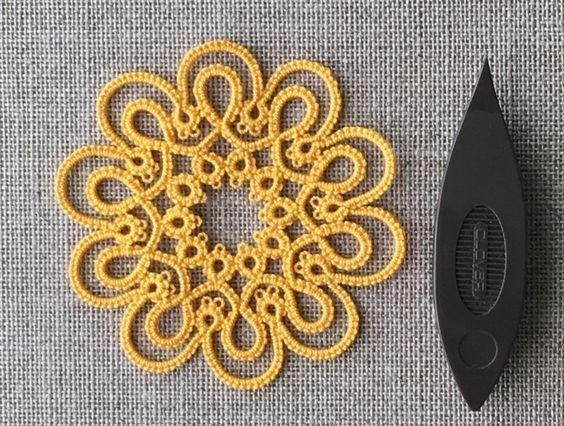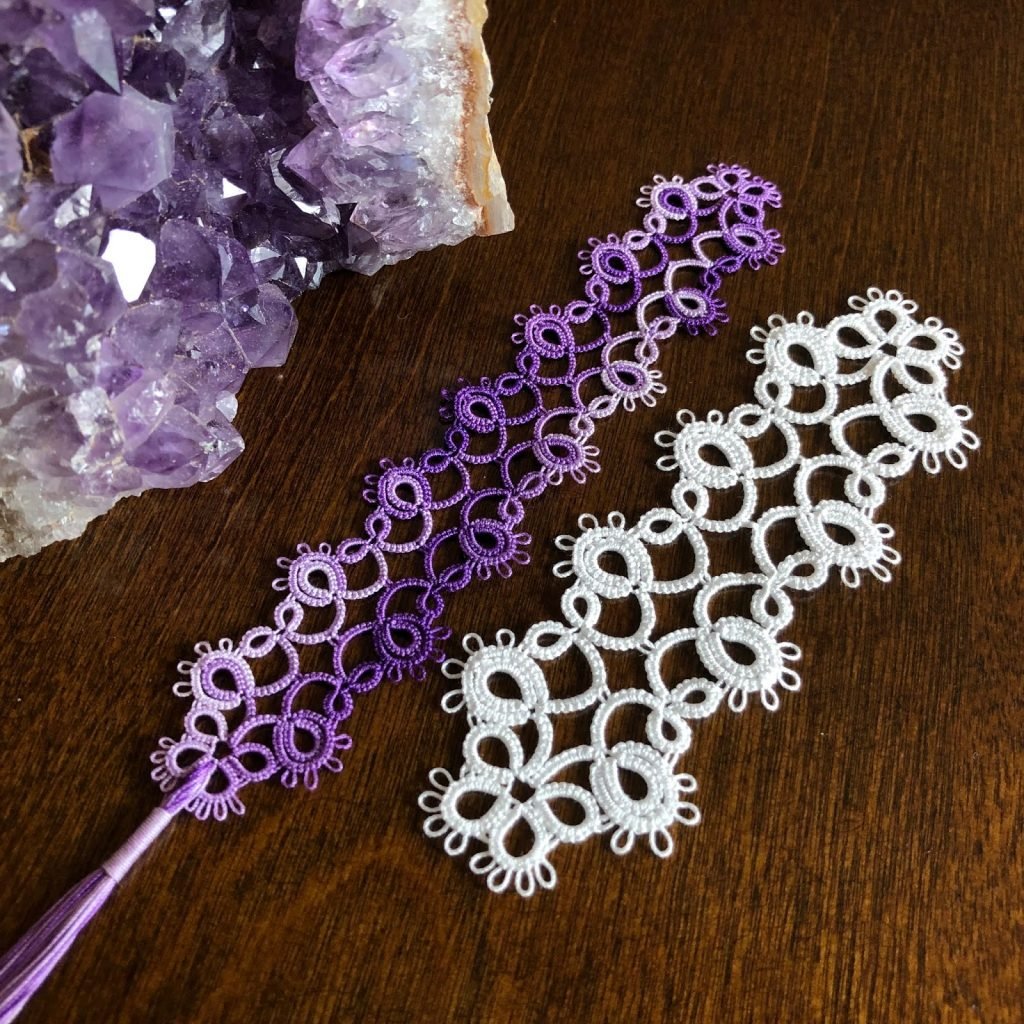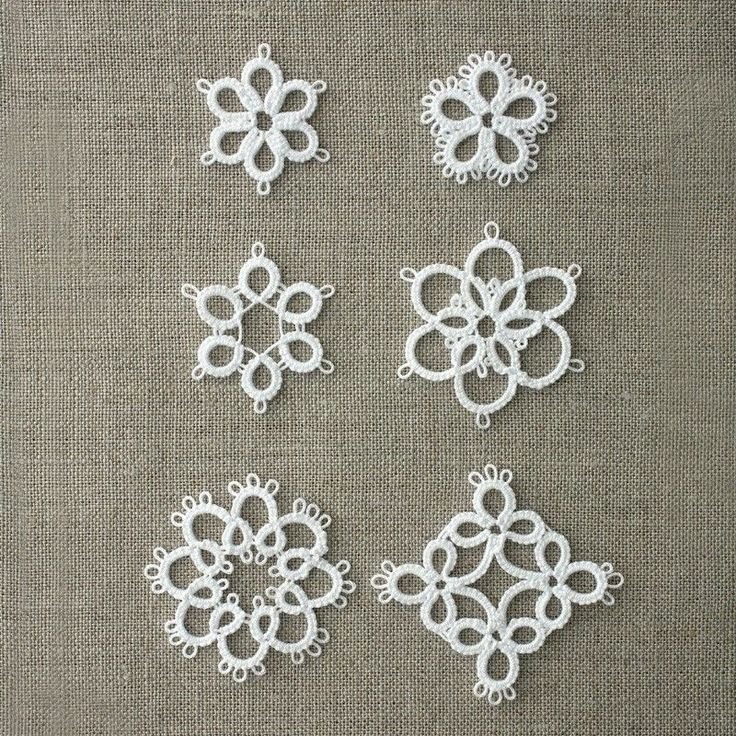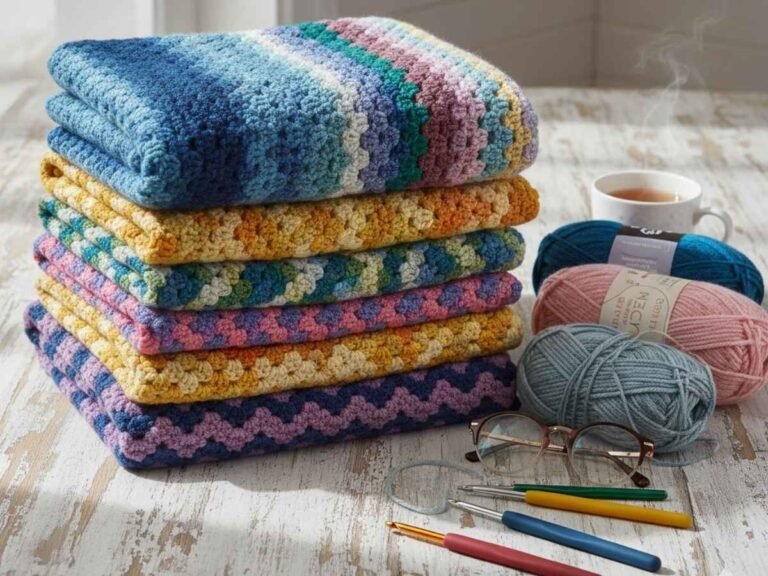
Hello Crafters !! Have you ever wondered what exactly is Tatting? Let us get to know about Tatting. Tatting is a technique for handcrafting a particularly durable lace from a series of knots and loops. Tatting can be used to make lace edging as well as doilies, collars, accessories such as earrings and necklaces, and other decorative pieces. The lace is formed by a pattern of rings and chains formed from a series of cow hitch or half-hitch knots, called double stitches, over a core thread. Gaps can be left between the stitches to form picots, which are used for practical construction as well as decorative effect.

Types of Tatting
Shuttle Tatting – Tatting with a shuttle is the earliest method of creating tatted lace. A tatting shuttle facilitates tatting by holding a length of wound thread and guiding it through loops to make the requisite knots. Historically, it was a metal or ivory pointed-oval shape less than 3 inches (76 mm) long, but shuttles come in a variety of shapes and materials. Shuttles often have a point or hook on one end to aid in the construction of the lace. Antique shuttles and unique shuttles have become sought after by collectors — even those who do not tat.
To make the lace, the tatter wraps the thread around one hand and manipulates the shuttle with the other hand. No tools other than the thread, the hands and the shuttle are used, though a crochet hook may be necessary if the shuttle does not have a point or hook.
Needle Tatting – Traditional shuttle tatting may be simulated using a tatting needle or doll needle instead of a shuttle. There are two basic techniques for needle tatting. With the more widely disseminated technique, a double thread passes through the stitches. The result is similar to shuttle tatting but is slightly thicker and looser . The second technique more closely approximates shuttle tatting because a single thread passes through the stitches.
The earliest evidence for needle tatting dates from April 1917, in an article by M.E. Rozella, published in The Modern Priscilla. A tatting needle is a long, blunt needle that does not change thickness at the eye of the needle. The needle used must match the thickness of the thread chosen for the project. Rather than winding the shuttle, the needle is threaded with a length of thread. To work with a second color, a second needle is used. Although needle tatting looks similar to shuttle tatting, it differs in structure and is slightly thicker and looser because both the needle and the thread must pass through the stitches. However, it may be seen that the Victorian tatting pin would function as a tatting needle.
Cro-Tatting – Cro-tatting combines needle tatting with crochet. The cro-tatting tool is a tatting needle with a crochet hook at the end. One can also cro-tat with a bullion crochet hook or a very straight crochet hook. In the 19th century, “crochet tatting” patterns were published which simply called for a crochet hook. One of the earliest patterns is for a crocheted afghan with tatted rings forming a raised design. Patterns are available in English and are equally divided between yarn and thread. In its most basic form, the rings are tatted with a length of plain thread between them, as in single-shuttle tatting. In modern patterns, beginning in the early 20th century, the rings are tatted and the arches or chains are crocheted. Many people consider cro-tatting more difficult than crochet or needle tatting. Some tatting instructors recommend using a tatting needle and a crochet hook to work cro-tatting patterns. Stitches of cro-tatting (and needle tatting before a ring is closed) unravel easily, unlike tatting made with a shuttle.

Buy Tatting Shuttle – Amazon
Pack of 10 Shuttles – Amazon Buy
Tatting – Let us get to know about Tatting Patterns –
Older patterns use a longhand notation to describe the stitches needed, while newer patterns tend to make extensive use of abbreviations such as “ds” to mean “double stitch,” and an almost mathematical-looking notation. The following examples describe the same small piece of tatting (the first ring in the Hen and Chicks pattern) Ring five ds, three picots separated by five ds, five ds, close, turn, spaceR 5ds, 3 p sep by 5ds, 5ds, cl, turn, spR 5-5-5-5 cl rw sp
Some tatters prefer a visual pattern where the design is drawn schematically with annotations indicating the number of double stitches and order of construction. This can either be used on its own or alongside a written pattern.

Check out other Crochet Related Posts – Click Here




